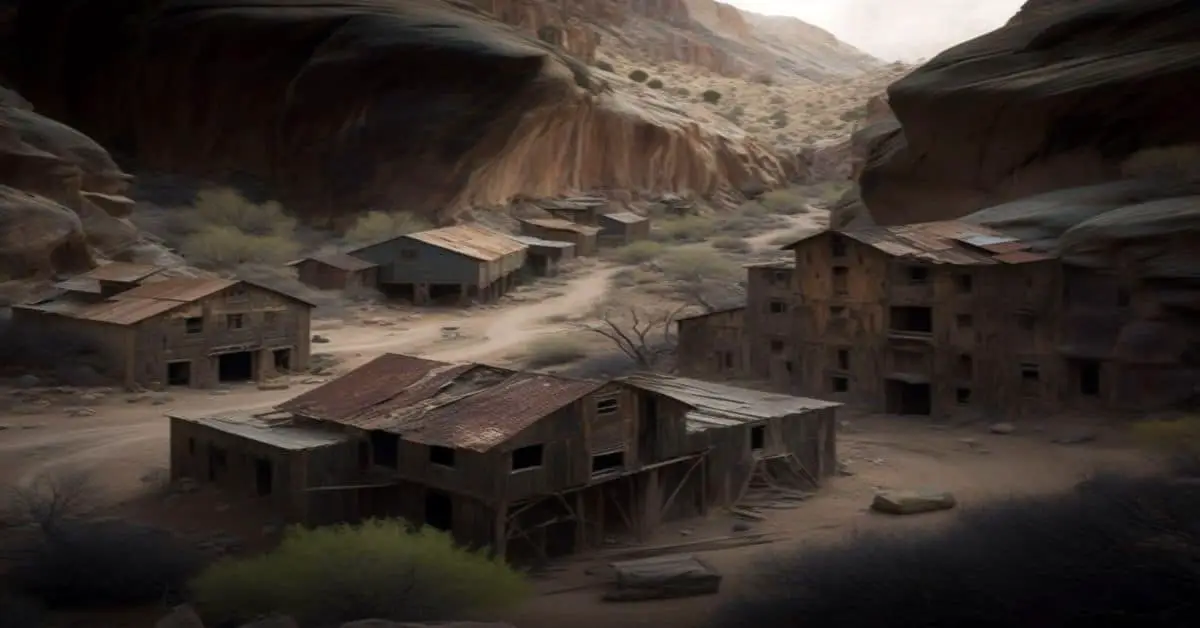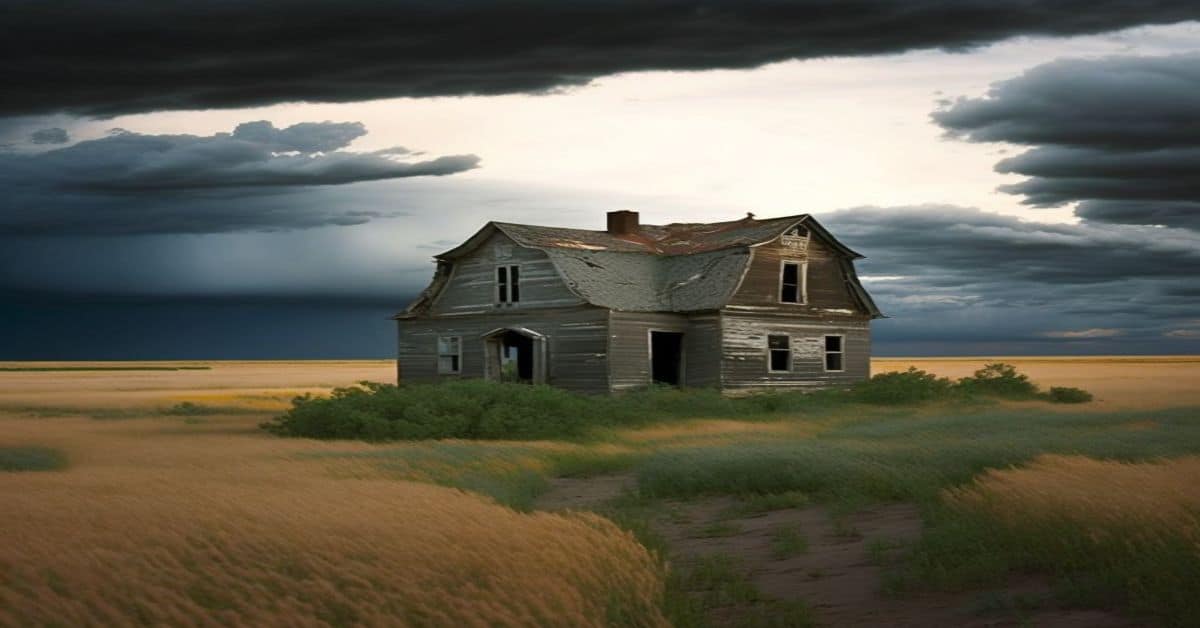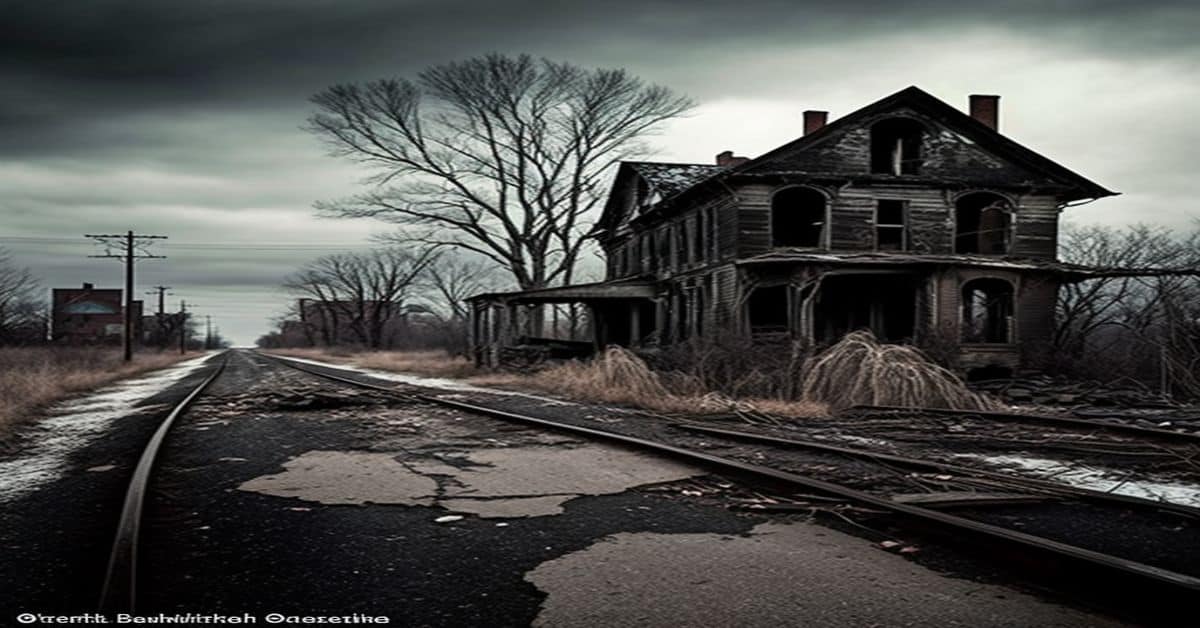Praha, Texas is a small town with a fascinating history of early Czech Bohemian settlers who established a rich agricultural area in the mid-19th century. Founded in 1854 by Mathias Novak, Praha became a mother colony to many other Czech settlements throughout Texas and was home to a population of 700 residents in the 1880s.
Despite its current seeming abandonment, the town still echoes with the stories and traditions of its Czech heritage, making it an intriguing destination for history enthusiasts and curious travelers alike.
The town’s most notable attraction is the magnificent Gothic church built in 1890, which serves as a testament to the religious devotion and craftsmanship of the settlers who built it. The church remains active on Sundays, drawing worshipers from far and wide to attend services and experience the rich cultural and historical legacy of Praha.
On any other day, visitors can explore the town’s quiet streets, imagining what life was like for the early settlers who worked to establish it and the challenges they faced in creating a new home in a foreign land.
Join us on a journey to discover the hidden charms and secrets of Praha, Texas, a ghost town that still holds strong to its Czech roots.
Key Takeaways
- Praha, Texas was founded in 1854 by Czech immigrant Mathias Novak and became a mother colony to many other Czech settlements throughout Texas.
- Praha’s enduring legacy can be seen in its Gothic church, which was built in 1890 and remains a symbol of the town’s religious and cultural significance.
- Praha’s agricultural prosperity was impacted by the arrival of railroads, leading to a decline in its economy.
- Praha is now a ghost town, but its Czech heritage and vibrant history continue to attract visitors from all over the world.
History and Founding
The history of Praha, a ghost town in Fayette County, Texas, begins with its founding by Czech immigrant Mathias Novak in 1854. Novak’s arrival in Texas was part of a larger wave of Czech immigration to the United States during the mid-19th century.
Over time, Praha developed into a thriving community, becoming a center of agriculture with 700 residents in the 1880s. Additionally, Praha served as the mother colony of many Czech settlements throughout Texas, exerting a significant cultural influence on the state.
Praha’s cultural significance can be seen in its enduring legacy, particularly in religion. The town’s gothic church, built in 1890, is one of the most magnificent Gothic churches in Texas and still stands today as a tribute to early Czech Bohemian Catholics. The church is still in use and draws worshipers from afar to attend Sunday services.
While Praha’s population has dwindled over the years, its cultural influence on Texas remains evident.
“Praha is situated about three miles east of Flatonia, south of the Southern Pacific Railroad, on the Jesse Duff league. Located on a hill in a beautiful liveoak grove, it presents a very fine view. The high steeple of the Catholic Church may be seen for miles reminding the faithful of the place of worship. The Catholic Church of Praha is the finest in the county, nay even in the state — a very majestic structure. It is a solid rock building. The aisle of the building is very high and makes a most solemn impression on the beholder. The altar is a masterpiece of artistic carving and construction. The imposing glass windows contain paintings representing scenes from the Holy Scripture. Rev. Father L. P. Nethardus is the priest of the church.”
http://www.fayettecountyhistory.org/praha.htm
Early Growth and Development
Founded by Czech immigrant Mathias Novak in 1854, Praha quickly became the center of a thriving agricultural community with 700 residents in the 1880s.
The town’s rich soil and favorable climate led to agricultural prosperity, and Praha became known for its production of cotton, corn, and wheat.
The town’s Czech heritage also influenced its agricultural practices, with many farmers using traditional Czech methods and tools.
However, the impact of railroads on neighboring towns drew businesses away from Praha, leading to a decline in its economy.
Despite this, the gothic church in Praha, built in 1890, is a testament to the town’s early growth and development.
Today, Praha remains a symbol of Czech heritage in Texas, with its vibrant history and traditions attracting visitors from all over the world.
The Magnificent Gothic Church
Constructed in 1890, the gothic church in Praha serves as a symbol of the town’s early prosperity and Czech heritage. The church’s architecture reflects the town’s strong Catholic traditions and is one of the most magnificent Gothic churches in Texas. The church’s design includes pointed arches, ribbed vaults, and flying buttresses. The church’s exterior is made of brick, and the interior features beautiful stained glass windows that depict scenes from the Bible.
The religious significance of the church cannot be overstated. It was built by early Czech Bohemian Catholics who wanted a place to worship and celebrate their faith. The church served as the center of the community’s religious and cultural activities, and it remains an important place of worship today.
Visitors to Praha can attend Sunday mass in the church and admire its beautiful architecture and historical significance. The church is not only a testament to the town’s past but also a symbol of its enduring faith and strong community spirit.
Frequently Asked Questions
What caused the decline of Praha’s population and businesses?
Praha’s population and businesses declined due to economic challenges such as the location of railroads drawing businesses away, reducing the town’s economic activity. The decline was gradual, and the town remains a quiet, almost abandoned ghost town today.
Are there any other notable buildings or landmarks in Praha besides the Gothic church?
Praha’s other landmarks include the Praha Cemetery and the Knights of Columbus Hall. Visitors can enjoy Czech cuisine at the annual Kolache Festival and experience Czech music and traditional costumes at the annual Praha Homecoming.
How has the culture and traditions of the Czech immigrants in Praha influenced the town’s identity today?
Praha’s identity is deeply rooted in the culture and traditions of Czech immigrants, evident in the town’s architecture and annual celebration of Czech heritage. The Gothic church is a prime example of Czech influence on architecture, while events like the Prazska Pout festival showcase Czech traditions today.
What is the current state of preservation and restoration efforts for the town’s historic buildings and sites?
Preservation efforts are underway to restore Praha’s historic buildings and sites. Funding sources include grants from the Texas Historical Commission and private donations. The gothic church remains in use and is a testament to the town’s Czech heritage.
Are there any local events or festivals that celebrate Praha’s Czech heritage and history?
Praha, Texas celebrates its Czech heritage and history through local events and festivals. Visitors can enjoy traditional Czech cuisine and folk music at the annual Praha Homecoming event, held on the first Sunday in August.


